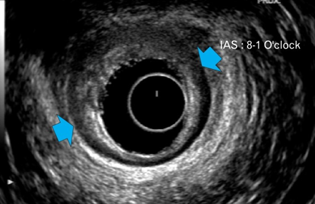All Departments
- Anorectal Manometry
- Diagnostics Endoscopy
- Endosonography
- Esophageal Manometry
- Gastroenterology
- Sonography
- Therapeutic Endoscopy
Emergency Cases
+91 9850 077 168
Endosonography
Endosonography is a procedure that allows a Doctor to obtain images and information about the digestive tract and the surrounding tissue and organs, including the lungs. Ultrasound testing uses sound waves to make a picture of internal organs.
During the procedure, a small ultrasound device is installed on the tip of an endoscope. An endoscope is a small, lighted, flexible tube with a camera attached. By inserting the endoscope and camera into the upper or lower digestive tract, the doctor is able to obtain high-quality ultrasound images of organs.
More About Endosonography
Endoscopic ultrasound may be used to:
- Evaluate stages of cancer.
- Evaluate chronic pancreatitis or other disorders of the pancreas.
- Study abnormalities or tumors in organs, including the gallbladder and liver.
- Study the muscles of the lower rectum and anal canal to determine reasons for fecal incontinence (accidental bowel leakage).
- Study nodules (bumps) in the intestinal wall.
A person undergoing an endoscopic ultrasound will be sedated prior to the procedure. After sedation, the doctor inserts an endoscope into the person’s mouth or rectum. The doctor will observe the inside of the intestinal tract on a TV monitor and the ultrasound image on another monitor.
Additionally, sound wave testing may be used to locate and help take biopsies (small pieces of tissue to examine by microscope). The entire procedure usually takes 30 to 90 minutes and the patient usually can go home the same day of the procedure.

